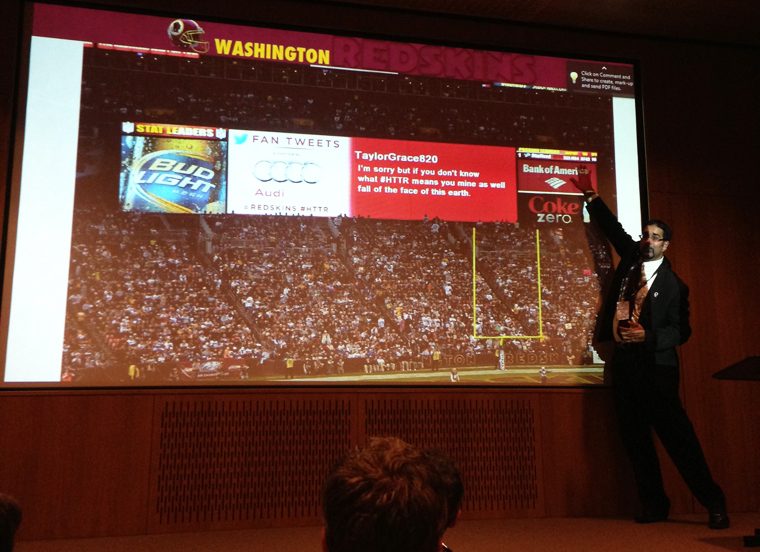Can Sports Teams Get Fans Off the Sofa and in the Stadium?
When sports fans consider going to a game, they often have to take into account the obstacles and hurdles of getting there. For starters, there’s the headache of battling traffic to get to the venue. Then there’s the problem of finding parking.
If you factor in the high price of tickets and concessions, it’s no wonder that more fans are opting to skip the madness and catch the game at home.
The truth, however, is that if fans believe a unique, worthwhile experience awaits them at the stadium, they will come.
Sports executives and technologists gathered at the On Deck Sports & Technology Conference in New York on Feb. 12 to discuss how teams and leagues could do a better job of luring fans from the sofa to the stadium.
“There is a stadium vs. sofa dilemma. Fans can get something at the stadium that you can't get at home, but at the same time, you want to do what you do at home,” said Gene Arantowicz, senior director of business development in Cisco's Sports and Entertainment Group, during a session. “We want to enable those things and not take things away from you. More and more [fans] want to participate in everything.”
The fact that people are turning to social media during live sports indicates that the urge for human interaction hasn’t gone down, but the appetite for the traditional stadium experience has.
Breathing Technology into the Stadium Experience
The stadium bowl hasn't changed since Roman days, said Bob Jordan, senior vice president of sports and entertainment at Van Wagner Sports Group. But big data and technology could help teams better understand fan behaviors and desires in awe-inspiring ways.
“Technology will give us information we've never had before about public assembly and design,” he says. “This is Big Brotherish, but we can figure out what people are doing when they leave their car. Why did they go that way?” [subhed] Technology’s Role in the Tribalism of Sports
While it’s easy to highlight the negatives of attending a live game, it’s also easy to list the positives: The roar of the crowd, the smell of hot dogs and fresh peanuts in the air, the palpable energy sent from fans to their heroes on the field or court.
These are the reasons that people shell out money for season tickets or grit and bear it through long commutes to the venue. These experiences can’t be had at home on the same level. Teams should elevate the unique human experience for fans at the venue as much as possible and that includes integrating with technology.
“When we talk to owners, we always impress upon them that we're tribal. We like to be with other people. We like to experience events with other people,” Jordan said. “Technology in a facility for technology's sake does nothing. A smart stadium is only smart if it realizes what your fans want.”
Rob Cohen, director of strategy at HUSH, a creative design agency, cited its Snoopy interactive touch-screen game at MetLife Stadium as an example of how technology can help create sticky fan experiences.
The game allowed fans to win prizes by placing bets on outcomes of the game using RFID cards with their personal information.
“That kind of engagement creates a much more interactive experience,” Cohen said. “This experience isn't present on the couch.”

Redskins Chief Strategy Officer Shripal Shah explains how the team pulled Twitter activity into the stadium during his presentation at the On Deck Sports & Technology Conference.
Credit: Ricky Ribeiro
In another session at the conference, Shripal Shahm, senior vice president and chief strategy officer for the Redskins, talked about how the team pulled the activity on Twitter into the digital signage in the stadium. In one example, the team tracked the number of tweets for its hashtag #HTTR (Hail to the Redskins) against the opponents team with a status bar indicating which team's hashtag was winning the battle in real time.
Taking it a step further, technology can be used to create “virtual stadium” experiences, Cohen said. In the future, we could see Second Life-style experiences where people sit next to say, a unicorn, instead of a person at their favorite sports team’s game. The added “wow factor” that technology can bring will make the in-stadium experience more valuable, he added.
The idea of a virtual stadium experience might sound a bit out there, but the ancient Greeks responsible for the original Olympic Games might find the Jumbotrons in our stadiums quite curious, as well. As long as the technology provides added value and keeps fans coming back for more, it’s worth it.








